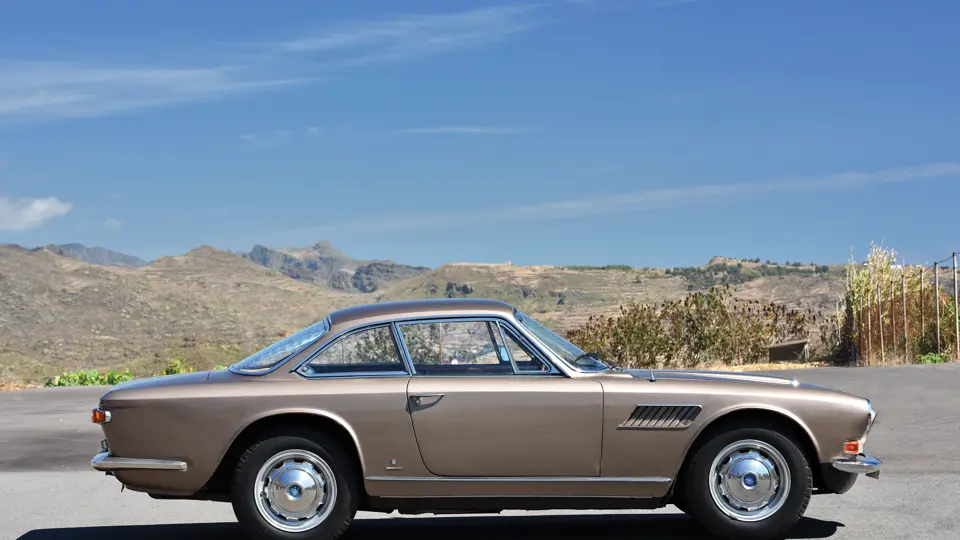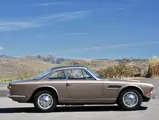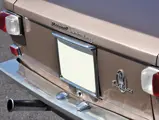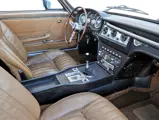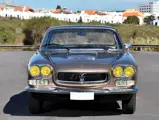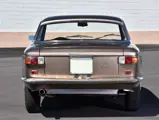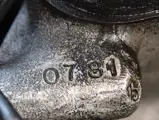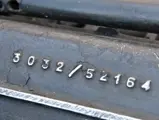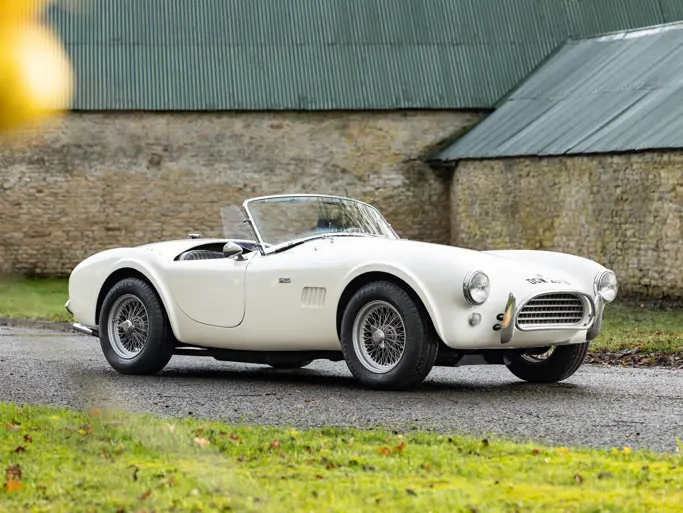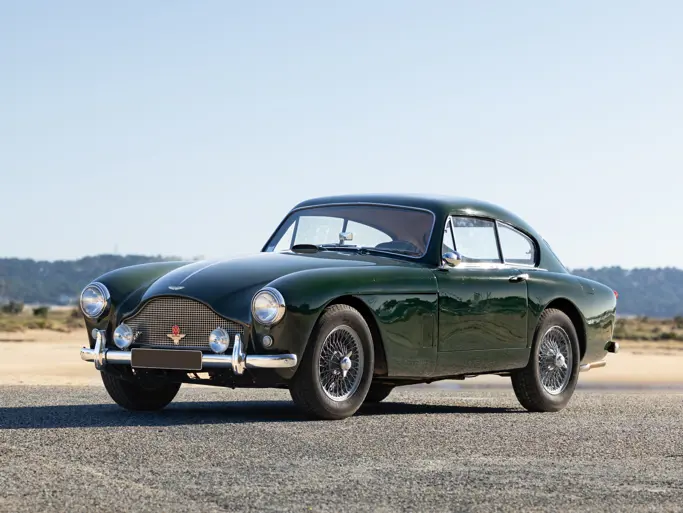
1967 Maserati Sebring 3700 GT Series II
{{lr.item.text}}
€168,000 EUR | Sold
{{bidding.lot.reserveStatusFormatted}}
- One of only 98 Series II Sebring Coupés
- Matching-numbers example; original interior
- A true grand routier capable of 240 km/h
- The 1967 Barcelona Motor Show car
- Fait partie des 98 exemplaires de coupés Sebring Série II
- Numéros concordants (matching numbers) ; sellerie d'origine
- Vraie grande routière capable d'atteindre 240 km/h
- La voiture du Salon International de l'Automobile de Barcelona 1967
265 bhp, 3,692 cc DOHC inline six-cylinder engine with Lucas indirect fuel injection, five-speed manual transmission, independent front suspension, live rear axle, and four-wheel disc brakes. Wheelbase: 2,550 mm.
Moteur six-cylindres en ligne, 3 692 cm3, 265 ch, 2 ACT, injection indirecte Lucas, boîte manuelle cinq rapports, suspension avant indépendante, essieu arrière rigide, freins à disques sur les quatre roues. Empattement: 2 550 mm
The first series of the Maserati Sebring was based on the handsome 3500 GT. It was introduced at the Salon International de l’Auto in 1962 and then again at the Salon dell’ Automobile in Turin the following year. The Sebring was constructed on a tubular steel frame that had been topped with a steel 2+2 coupé body from the pen of Vignale stylist Giovanni Michelotti. Its frontal appearance differed from that of the 3500 GT by the addition of newly en vogue quadruple headlights, which were flanked by a bold grille and Maserati’s traditional Trident emblem. Borrowing a bit from its Quattroporte sibling, new side vents appeared on the front fenders, along with new front turn signals. The bumper design was changed to thin horizontal chrome bars, the tail lamps were revised to horizontal from vertical, and the boot lid was reshaped.
Production estimates vary, depending upon the source. It is believed that no more than 446 Sebring Coupés were built from 1962 to 1967, with 348 being Series I Tipo AM101/Ses and 98 being Series II Tipo AM101/10s. By the end of its run, engine displacement had grown to 3.7 litres and then 4.0 (Tipo AM 106/1). Output from the 3.7-litre, twin-cam, twin-ignition inline-six was 265 horsepower, which was fed by Lucas indirect mechanical fuel injection. A ZF five-speed gearbox directed power to the road through classic original steel wheels. With its steel body and luxurious interior, this was not a lightweight sports car but a true grand routier with a top speed of 240 km/h within reach. It was priced to match, with a U.S. list price of $12,800.
This Series II Sebring Coupé has six owners from new and is noted on factory records to have been shown at the 1967 Barcelona Motor Show. It was imported new to Spain and has been in a Spanish collection since the mid-1980s. Whilst the car has been repainted an elegant metallic beige, its interior appears to remain quite original. The tan leather seats show the expected amount of wear and tear for a near half-century-old automobile. Documents supplied with this car show that the front bumper was replaced in 1992 with a new OEM part. Service invoices also show extensive attention to the fuel and cooling systems in 2013. It has since passed the Spanish ITV (Inspection Technical Vehicular) on 4 November 2014. Mechanically, this Maserati’s muscular six-cylinder engine starts and runs surprisingly well, showing no exhaust smoke.
This uncommon Sebring Series II Coupé appears to be complete. With some tender love and care from a dedicated enthusiast, it would be an excellent candidate for a full restoration, and if given some additional mechanical and cosmetic attention, it would provide the comfortable grand touring that Maserati intended.
Issue de l'élégante 3500 GT, la Maserati Sebring Série I était présentée en 1962 au Salon International de l'Auto de Genève, puis à nouveau au Salon dell’ automobile de Turin, l'année suivante. La Sebring était constituée d'une structure tubulaire en acier habillée d'une carrosserie 2+2 en acier également, dessinée par Giovanni Michelotti pour Vignale. L'avant était différent de celui de la 3500 GT principalement par la calandre quatre phares, formule très en vogue à l'époque. Elle était flanquée de nouveaux clignotants et l'on retrouvait au centre de la prise d'air le fameux trident Maserati. Les ailes avant recevaient de nouvelles ouïes latérales et les pare-chocs avant et arrière étaient constitués d'une fine lame chromée. Les feux arrière étaient également modifiés, et le coffre redessiné.
Les chiffres de production varient en fonction des sources. Il est probable que la production totale de coupés Sebring n'a pas dépassé 446 exemplaires entre 1962 et 1967, dont 348 Série I Tipo AM101/S et 98 Série II Tipo AM101/10. Au cours de la carrière de la voiture, la cylindrée du moteur est passée à 3,7 litres puis 4 litres (Tipo AM 106/1). Le six-cylindres 3,7 litres double arbre, double allumage et alimentation par injection développait 265 ch. Il était relié à une boîte ZF cinq rapports et la puissance était transmise à des jantes classiques en tôle. Avec sa carrosserie en acier et son habitacle luxueux, la Sebring n'était pas une voiture de sport légère, mais une véritable grande routière capable d'atteindre 240 km/h en pointe. Le prix correspondait à ces prestations, affichant 12 800 $.
Le présent coupé Sebring Série II a connu six propriétaires depuis l'origine ; il a été exporté neuf en Espagne et fait partie d'une collection ibérique depuis le milieu des années 1980. La carrosserie a été repeinte dans une élégante teinte beige, mais l'intérieur semble être resté très original. Les sièges en cuir beige présentent un degré de patine et d'usure qui correspond à ce que l'on peut attendre d'une voiture âgée d'un demi-siècle. Les documents fournis avec la voiture montrent que le pare-chocs avant a été remplacé en 1992 avec une pièce d'origine, et les factures d'entretien font apparaître en 2013 une révision des systèmes d'alimentation et de refroidissement. Depuis, la voiture a passé l'ITV (contrôle technique) espagnol, le 4 novembre 2014. Mécaniquement, le six-cylindres musclé de cette Maserati démarre et fonctionne étonnamment bien, sans fumée à l'échappement.
Ce coupé Sebring Série II peu commun se montre complet et, avec le soin que lui apportera un amateur passionné, il peut constituer un excellent candidat pour une restauration complète ou, avec quelques travaux mécaniques et cosmétiques, être utilisé comme une confortable Maserati Grand Tourisme telle qu'a toujours été sa vocation.




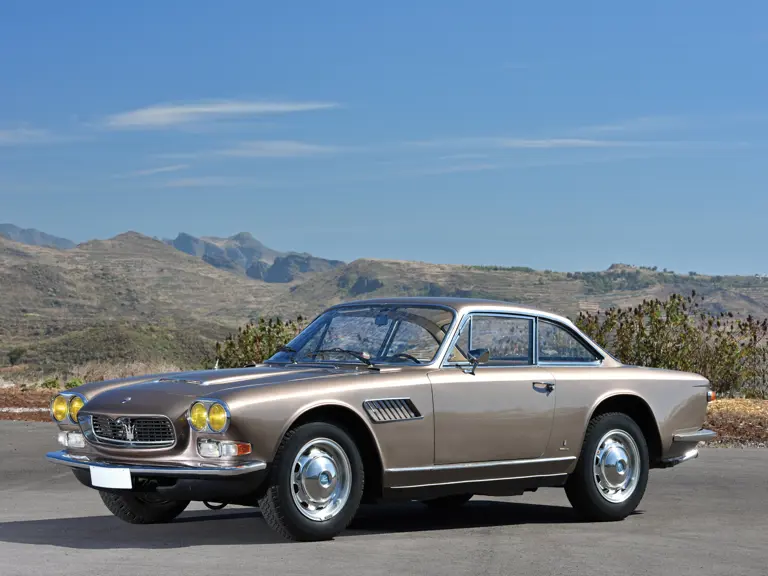
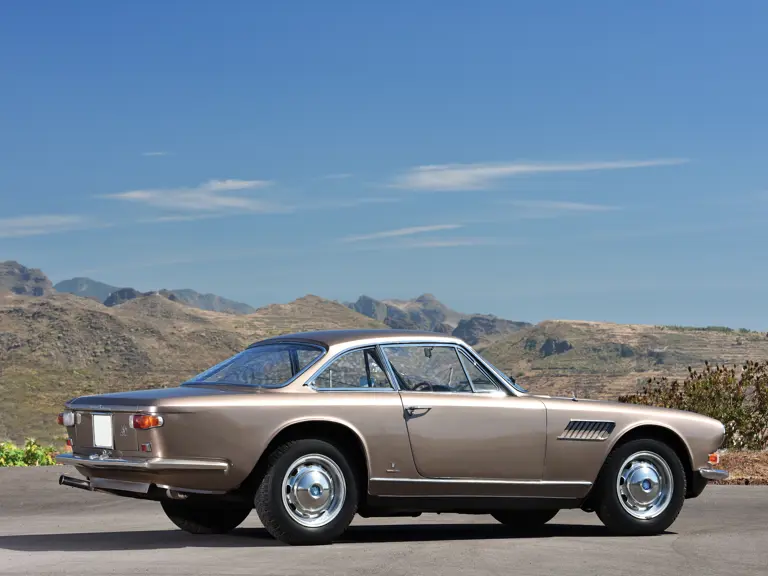

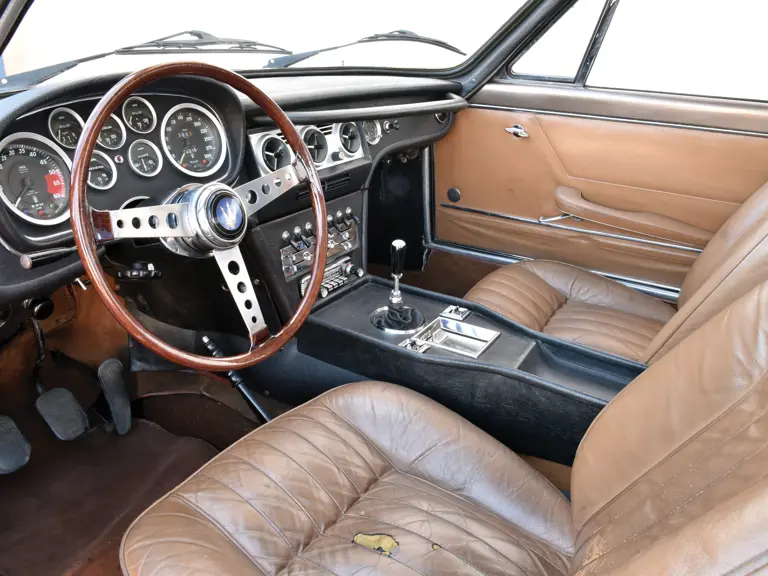

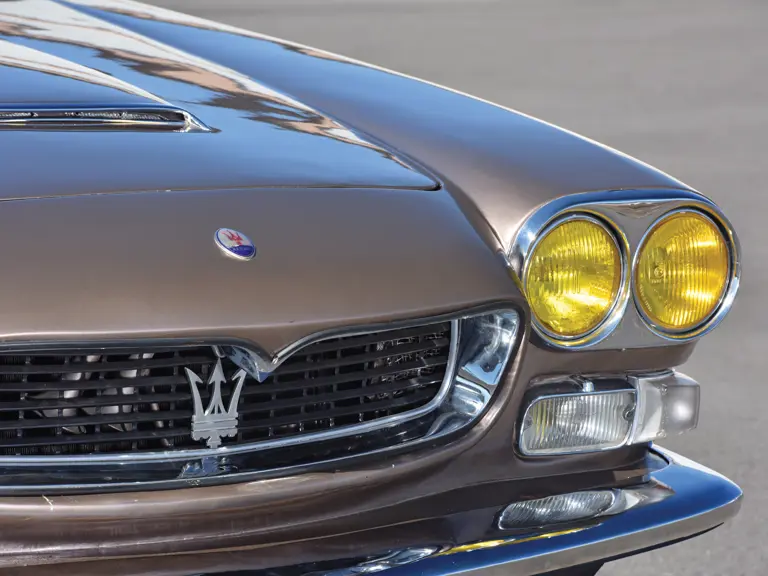
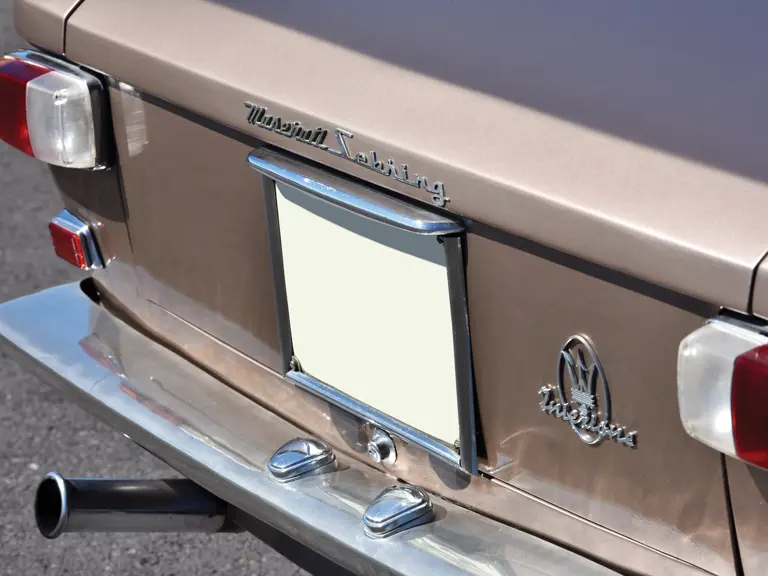
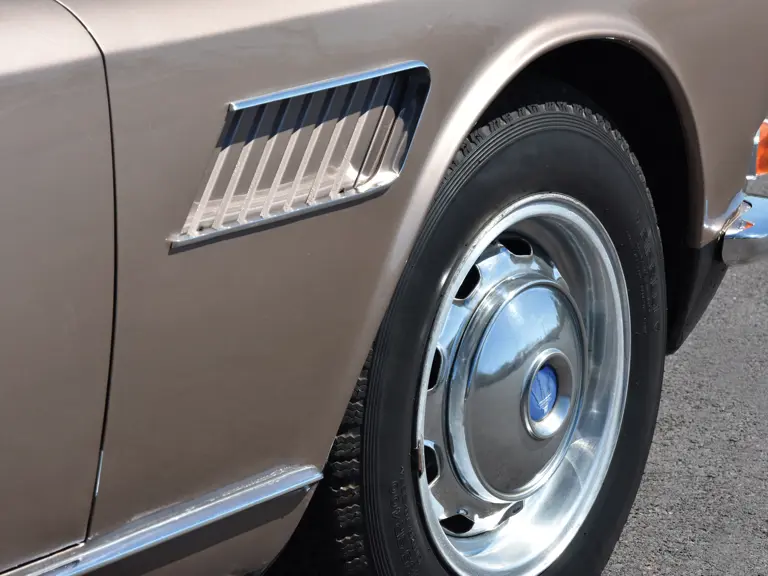
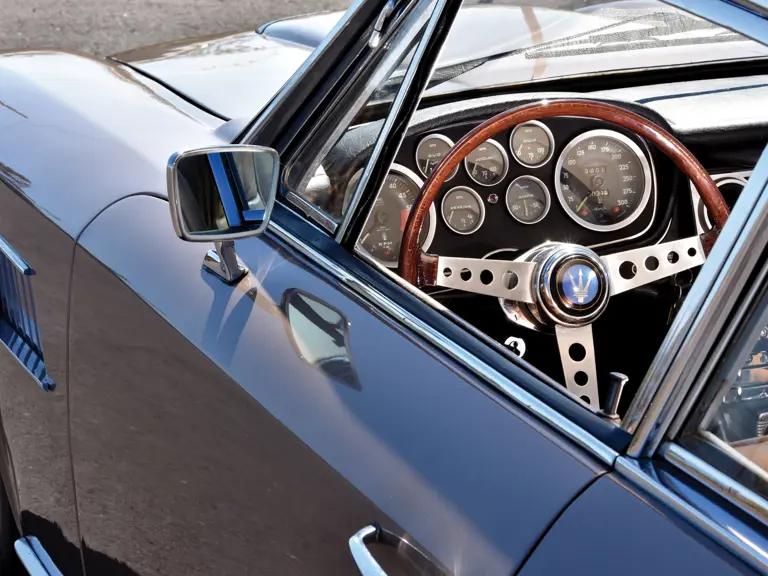



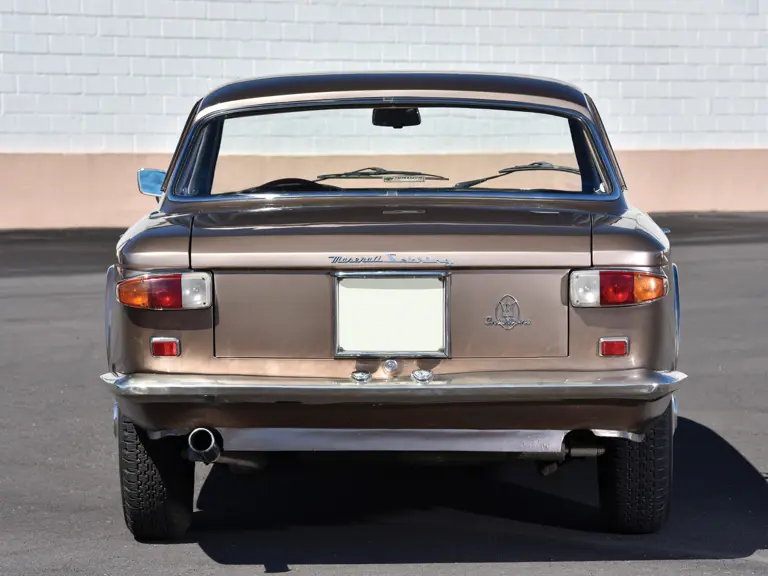
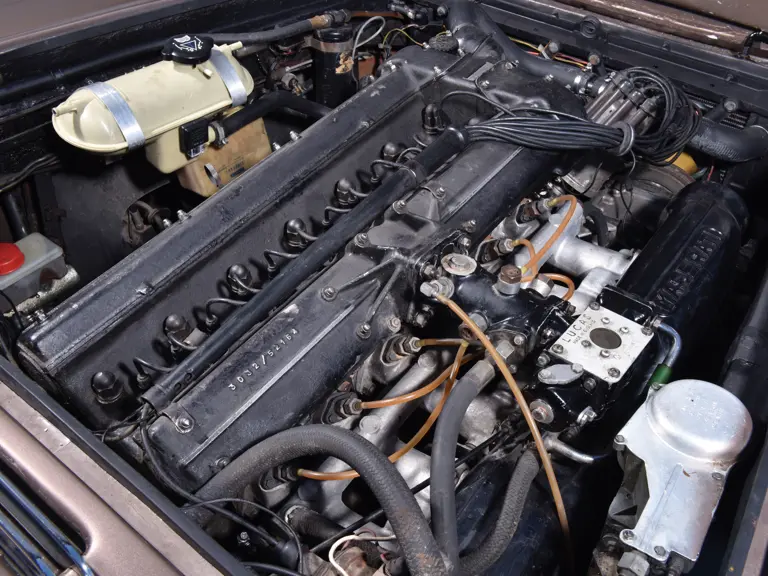
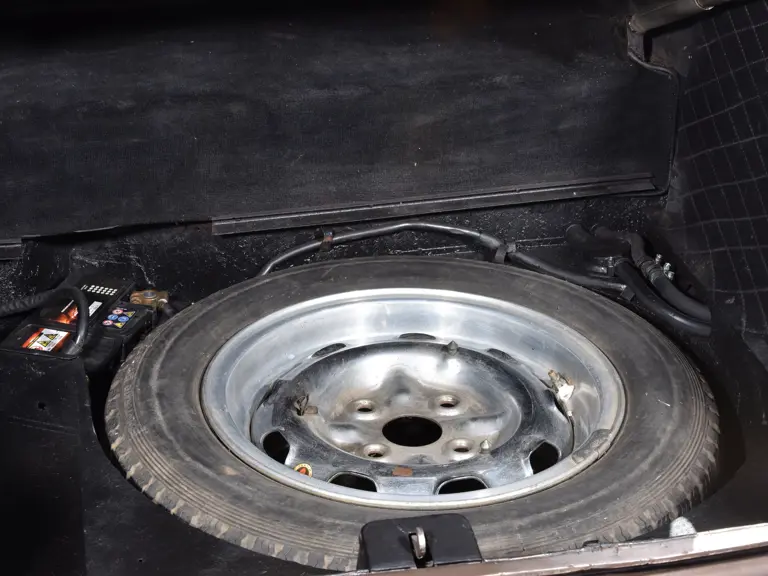
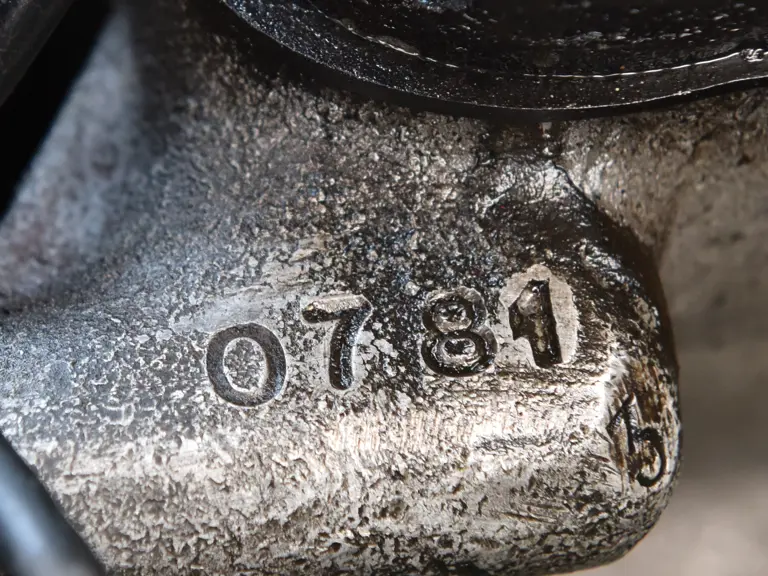

 | Paris, France
| Paris, France
